Combining LCHF/VLCHF diet +/- Intermittent Fasting to achieve episodes of Ketosis; The iFast-LoCa Lifestyle.
Click Here for PDF with a lot of helpful information
Http://Facebook.com/christianassadMD
Instagram: @MedHacker
Twitter: @ChristianAssad
DISCLAIMER: The post is being shared with many people and seems some are modifying their lifestyle to go along these lines. I SPEND AT LEAST a total of 1 hour with my patients when introducing them to this. I WANT TO EMPHASIZE this lifestyle should ideally be done under medical supervision or at least after being ADEQUATELY educated on the matter. THE POST ON ITS OWN IS NOT MEDICAL ADVICE. Now, lets continue.
August 16 2019: I would like to CLARIFY that there are some OVERLY simplified concepts in order for people to get the message in an easier way. I have found this helps get the message through in many cases. Over simplification can make certain concepts I mention appear erroneous from the scientific stand point and I understand this, just stating this if someone is ready to criticize.
NOW LETS CONTINUE
We’ve had some friends ask us about the iFast-LoCa (I Fast-Low Carb) diet/lifestyle in more detail. Hence, we will try to summarize and simplify it as best we can in this post, and hopefully get you interested enough as to juggle with the idea of trying it:
Imagine you live in the 1900’s and you have no access to any convenience stores or that you are a cast away on an island and have limited access to resources. What would your eating habits be like? Let’s think of Chuck Noland (Tom Hanks) in the movie Cast Away; his before-gif (below) shows the average unattended male body… until his eating habits literally crash and he has: NO access to those easy-accessible, impulse-eat poisons called Refined Sugars aka CARBAGE, NO stocks of neatly boxed and bagged Refined Grains, NO supply whatsoever of Refined Carbohydrates (NO I AM NOT AGAINST CARBS, JUST CRAPPY ONES) So, he forcibly goes the “keto”-route, probably with periods of intermittent and even prolonged fasting, and undoubtedly achieving a state of ketosis.
You might be thinking, “Well…that doesn’t sound too enticing.” And in Noland’s situation, you would be correct. However, the idea behind the article is to reach fat adaptation/ketosis without having to put yourself in these extreme situations, rather reach it out of sheer personal choice.

Your organism is a hybrid and can run on two types of ‘fuels’: Glucose and Fat. In most circumstances your body’s naturally-occurring cells can use both Glucose and Fat as ‘fuel’… On the other hand, research is now showing that certain cancer cells can only feed on Glucose (Starving Cancer TED talk by Dominic D’Agostino). Yes, your read correctly, simply by lowering your Glucose intake you could immediately reduce your risk of feeding potential cancer cells (does not apply to all and research is ongoing) that are trying to stage a coup of YOUR body.
THE FIRST STEP FOR AN “ADDICT” IS…
Before we get into the easy 1,2,3 that is iFast-LoCa, we just want you to take a moment and truly understand why we see Refined Carbohydrates as “DRUGS” and why the world is full of junkies.
This is due to the fact that, if permitted, these Refined Carbohydrates can be given the power to play a central role in the aspect of your brain that stimulates rewards and cravings (activity within the mesolimbic dopaminergic system and nucleus accumbens which can be visualized below); to a certain extent, stimulating the same exact brain area in a similar way that cocaine or other highly-addictive drugs do (YES, I KNOW, THIS IS A CONTROVERSIAL POINT). So, if you are constantly getting this sugar-high, this false feeling of well-being, you start craving it and rewarding yourself with it… hence, you give way to a vicious cycle that slowly, but surely has affected millions and has become (in part ) the cause of the obesity epidemic which we are living today. (The major player would be hormonal interplay which is, to a certain extent, intertwined with what you eat and when you eat. Explaining this would require a post of its own and I go through this in detail in the established clinic visit). A keypoint would be individuals releasing more insulin, then developing resistance which subsequently leads their pancreas to secretes more insulin. More insulin leads to hyper-insulinemia, hypertension, and eventually Diabetes. This goes with a theory of the Carbohydrate-Insulin model of obesity (accepted by some frowned upon by others, not the point of this post).
If you think we are exaggerating in comparing Refined Carbohydrates to Drugs, let’s take a look at the brain scan below. What you are seeing are the brain areas that light up after a high intake of Refined Carbohydrates. Any wild guesses? We are almost sure you guessed right; these are the same areas that light up when consuming illicit drugs.
Furthermore, it is of no surprise that individuals tell you that they get the “shakes” and start sweating if they don’t get their fix of preferred CarbohyDrugs, this is due to the fact that they are basically going into withdrawal.

Now, if Refined Carbohydrates are like drugs, and products containing them have caused an obesity epidemic… well, “Who’s the dealer?”
Well, in 1980 a report called the Dietary Guidelines for Americans was released (to a certain extent, going against our biochemistry) and it gave the following recommendations:
-Raise consumption of carbohydrates until they constituted 60% percent of calories
-Decrease fat consumption to 30% percent, of which no more than one-third should come from saturated fat.
But then again, Lehninger’s Principles of Biochemistry says; “On average, 40% or MORE of the daily energy requirement of humans in highly industrialized countries IS SUPPLIED by dietary triacylglycerols/fatty acids aka fat (although most nutritional guidelines recommend no more than 30% of daily caloric intake from fats).
In other words, the THE CURRENT Dietary Guidelines for Americans appear to go against human physiology… Now, how does this fit in the obesity picture? (No, we can not blame the guidelines alone for the obesity pandemic, for the critics, I am simplifying this)

Yes, we know, this is mind-blowing, evenmore so when you realize we grew in a “FAT-FREE” consumer era, which methodically got us hooked on the wrong type of ‘fuel’, and turned us into mind-numbed sugar addicts in constant need of pharmaceutical corporations to treat for the addictive poisons their business partners ‘fed’ us for decades.
Want a good example? Check The Jimmy Kimmel YouTube challenge – I Told My Kids I Ate All Their Halloween Candy. Observe their reaction. It would even seem that they have an addiction. How many kids have that reaction when you take away their Broccoli?
LET’S BREAK THIS VICIOUS CYCLE
KISS methodology (“Keep it simple, stupid”, principle noted by the U.S. Navy in 1960).
1. Cut-Off Refined Sugars +/-Grains
To start this off we want to explain that refined sugars and refined grains ARE considered Refined Carbohydrates, and their common denominator is that they don’t occur naturally. This doesn’t mean they don’t exist, it just means nature does not produce or process them as such.
This leads us to the term refined which means processed or developed. And once again we ask, “What does that mean exactly?” Well, it means that the sugars/starches and grains found in nature are transformed, essentially pulverized into smaller particles, its components separated and even becoming their very own byproducts. The importance of this is that, particle size matters. The smaller the particles, the easier they are to digest. The easier they are to digest, the faster your blood sugar will rise after you eat them, using the processed Glucose within them as ‘fuel’.
The typical American consumes between 120 to 150 pounds of Sugars/Starches each year. How can anyone conscientiously do that to themselves? Well, within the question lies the answer. They don’t. At least, NOT conscientiously, I mean. Sugar is a stealthy scoundrel, it creeps up on you like a ninja through: Sucrose, glucose, fructose, maltose, dextrose, lactose, corn syrup, molasses, honey, evaporated cane juice, fruit juice concentrates, cane crystals, corn sweetener, etc.
In the case of Grains they are found with an outer-bran coating; the coating is broken and then the grains are separated, granulated, and even pulverized.
As an example flour is made from cereal grains, wheat, corn, rye, barley, rice, etc. it is not found naturally in nature. It is pulverized or refined into such a fine powder that your body’s digestive system and metabolism do not strain at all processing it, and hence, spikes of Glucose ‘fuel’ are released instantly into you organism.
Soda, Candy, Donuts, Cookies, Chips, Granola Bars, Cereal, Bread, Tortillas, Ketchup, etc. These are all Trojan horses, treading as vehicles for Refined armies, that are slowly released on the unguarded-walls of your body.



Once a good friend of ours summarized diets in a single phrase, “If it tastes good spit it out!” We won’t go as far as to say that, but what we do state is that if man made it, think twice before putting it in your pie hole. In scientific terms: If in 3.5 Billion years Mother Nature didn’t generate it, then you can rest assured you don’t need it… Get the drift?
2. Moderate UNrefined Carbohydrates
Carbohydrates that are found in nature are named UNrefined Carbohydrates. These carbohydrates are found in fruits, vegetables, nuts, legumes, dairy, etc. The important aspect of understanding UNrefined Carbs is to be able to visualize how many grams of carbohydrates each food has and monitoring our intake. (Depending on the goal, some can eat more some can not)
In our case, before we researched this we would eat grapes like pop-corn, nuts by the handfuls, and maybe even start our day with a two-banana double trouble shake! Not there isn’t anything wrong with these foods, what was wrong was our naive indulgence, our UNrefined Carb overload. The idea is not to avoid or cut these foods off completely, it merely is to acquire the knowledge and ability to quantify them and consume them strategically with moderation. We call this Carb-Awareness.
The links/tables below show amounts of carbohydrate per serving size.
One of my patients found this excellent source with images at the DietDoctor blog. Here is the link or just click the image below https://www.dietdoctor.com/low-carb/foods
https://www.dietdoctor.com/low-carb/foods
“But, how much is enough?” you may ask. Below we divided different IFast-LoCa into three different phases, depending on the quantity of Carbohydrate intake.
STRATEGY: HOW MANY CARBS SHOULD BE CONSUMED DAILY?
In this section we detail the phases or levels of carbohydrate consumption so you can see what to look forward too.
The first positive point is that you DON’T have to worry about calorie counting, just practice Carb-Awareness.
================================================================(Prepare yourself for success)

We know it may be a hard good-bye, after all you have spent so much time together that it may almost seem impossible to let go. Some may even say, “Life isn’t worth living it if I am going to be limiting every single bite I eat, I’d rather enjoy life.” Yes, the fear of change and letting go always brings with it anxiety and in turn the excuses pour down. Just Man or Woman-Up and give yourself chance to make a worth-while LIFE CHANGE. What’s the worst that could happen?
So, use this week to clean your pantry and to educate yourself regarding the foods you will be eating. There are a lot of great foods and potential recipes, in no way should you be fighting off hunger or holding your taste buds prisoners. Now, people ask us for a diet, there is none: if you are hungry eat, if you want a snack there are plenty, just remember to ask if nature made it naturally and be aware of what you eat.
An important aspect to be successful is to finally familiarize yourself with nutrition labels. There have been great regulations passed as far as ingredient transparency goes: make us of them!! For example, a few months back we were eating smoked salmon under the assumption it was pure protein and healthy fat, right? Well, to our surprise, somehow “the dealers” we talked about before managed to add 5 grams of sugars per serving; a total of 3 servings added up to 15 grams of stealthy poison! Moral of the story, read the nutrition labels, understand them and visualize how you are filling up your organism’s ‘fuel tank’.
If you have a sweet tooth DO NOT WORRY. Go to the right and look at the AMAZON list. Here you will find some options people have shared with us.
================================================================
Phase I > (2+ weeks) (50-100gr)

Depending on your current intake results may vary, but we have had patients tell us they felt jittery, got the cold sweats, felt anxious, or all three when avoiding their fix of preferred CarbohyDrugs. This, in itself, should give you enough proof as to at least give iFast-LoCa a try.
As we mentioned in the post the most efficient way to decrease your carbohydrate intake is by simplifying where you are going to be getting them from. In this phase you need to start educating and familiarizing yourself with what you can and cannot eat. Slowly you will get the hang of it, start visualizing new taste-profile combinations and understanding that food and taste-wise, you are not limited at all!
**Another good one list is -> keto-diet-grocery-shopping-list-pdf
For those that like to get their drink-on or just like some alcohol every now and then. Tequila, Whiskey, Scotch, Vodka, Rum, Brandy, Gin.
Learn to pair them with mineral o gasified water, if possible, and obviously cut down on the sugary mixers, and if it has an umbrella in the glass, DON’T GO NEAR IT.
================================================================
Phase II > (2 weeks) Getting Warmed Up (50gr of Carbohydrates )

For many 50-100gr of carbs already starts achieving changes for some it does not. Individualization is key, and if you feel like it you can give this a shot.
At this point we are 100% sure you have seen the changes and started feeling your physical, mental and emotional transformation. Once you take note of these changes in your body: the feeling of being limber and energized, focused and driven, rested and at ease, just run with it and use it as motivation. You are on the right track and things will only get better…but you shouldn’t be taking our word for it, it should be obvious to you when you look at the mirror or walk a flight of stairs.
Important: The IFast-Loca SHOULD be handled by each person at their own pace, so you can either stay at Phase I or you can choose to push forth. Whatever it may be just be true to how you feel, and when you are ready put the pedal to the metal, and go for it, visualizing your body using fat as its primary source of energy and then…
================================================================
Phase III (<50gr)

Click on IMAGE to enlarge it

Heads-up: When people are entering ketosis many describe a feeling that is similar to that of a hangover, or also known as a carb-withdrawal syndrome. As we deplete our glycogen and start using fat as energy, our body will start eliminating more fluid as well as sodium and you will start going to the bathroom. This is due to the fact that glycogen necessitates around 3 to 4 grams of water reserve. This electrolyte imbalances can cause headaches, nausea, feeling fatigued or dehydrated. Many tackle this with pickle juice, Pedialyte, or sparkling soda water with lemon and salt. It lasts approximately 2-3 days, power through.
*In this phase we would also recommend magnesium 500 mg daily tablet, and a multivitamin.
================================================================
Intermittent Fasting as a Catalyzer
Intermittent Fasting can be used in different ways. There are people that can fast without a problem since the start, others can not. We got different results. One of us would get headaches and feel lousy and only after ketosis was achieved could fasting be incorporated. Reason? Once fat reserves are being used as energy, fasting for prolonged 18-24 hours became a piece of cake. On the other hand, one of us fasted in the initial phases and accelerated the depletion of the glucose reserves without any symptoms. What we are trying to say is that there isn’t one-size fits all diet or schedule, each individual has to taylor it to his own body.
Other ways of using intermittent fasting in our benefit is after having a cheat day. So lets say a Sunday you “pig out” well, then monday you do a 24-hour fast which will likely once again reduce the glycogen reserves that you created, and bring you back to fatty acid use quicker.
The IFast-LoCa diet can be used at will depending on the individual’s goal and discipline; different combinations can be performed and each will have different results.

================================================================
So, in summary this diet or lifestyle is focused on three simple concepts
I) Be convinced you want to become a fat burning machine. Oh, by the way, we stated BHB is GHB’s twin, and GHB is like liquid ecstasy; this is only the FUN part to entice you, BHB also provides a lasting source of energy that will drive your physical and cognitive performance for hours.
I) Avoid any Refined Carbohydrates (processed sugars and grains) focusing on a low UNrefined Carbohydrate diet, understanding which foods contain what amounts of carbs.
II) Intermittent fasting, which can be done in different ‘windows‘ and time frames. Some people would rather do one or two days of a 24-hour fast, others prefer a particular eight hour window in which they will be eating, others just choose to wing their schedule as they go.
With different combinations, permutations, and incorporations of these concepts, almost everybody we know has lost weight; even just in the initiation phase of a low carbohydrate diet. Those that incorporate the intermittent fasting concept +/- achieving ketosis increase dramatically their fat loss.
Last but not least. One of the major misconceptions that you hear from people regarding a low-carbohydrate diet is when they refer to it as an “extreme” Atkins diet; Eating too much bacon, or greasy processed burgers from your local burger-joint. This is not what you should be trying to achieve. Far from it. Not because you have to cut down on carbs and eat more fat means you are going to stuff your face with two bars of butter!! We want you to eat healthy and use your common sense.
Eat protein such as Tuna, Salmon, Fish, Chicken, Sardines, Beef.
Stick to eating (not drinking) your green vegetables, leafy vegetables, vegetables with fiber.
Stay away from liquid poison; no more Coca-Cola, Pepsi, and so forth. No more fruit juice, be it from concentrate or even natural.
Short and sweet; hopefully this helps you get the big picture and change your life one less carb at a time!
Cheers
Christian Assad, MD Interventional Endovascular Cardiology
Alexander Assad, MBA
The COVIDEUS Snorkel-Respirator Mask

Experimenting with Yellow, Orange and Red (Carbonshade) Blue light blocking glasses to improve Sleep.
 Different wavelengths of light affect the release of melatonin and can have deleterious effects on quality of sleep. Exposure to light at night, which can come from our electronic devices or house lights can shift the phase for melatonin rise or even resetting the time of our internal circadian clock.
Different wavelengths of light affect the release of melatonin and can have deleterious effects on quality of sleep. Exposure to light at night, which can come from our electronic devices or house lights can shift the phase for melatonin rise or even resetting the time of our internal circadian clock.
Studies show that bluelight has the greatest effect on phase shifting of our circadian clock and suppression of melatonin and that is what got me interested in bluelight blocking glasses. The spectral distribution at which melatonin is affected ranged from 430-530nm, peaking at 464nm but going on to 570nm. To avoid this effect we can either shut down all electronics, turn off lights or we can choose to use bluelight blocking glasses.
I have been trying different glasses for some time and was recently contacted by Carbonshade to try their glasses and give an honest review. I mentioned to them I would gladly do so and give my honest opinion about them and here it is. (Spoiler, they are now my favorite)

There are 3 different glass colors used to block the spectrum of light that impairs adequate melatonin secretion. Yellow, Orange and Green. Having in mind that the spectral distribution at which melatonin is affected ranges from 430-530nm, peaking at 464nm but going on to 570nm. I obtained the following information and compared the 3 glasses that I used.
1) Yellow (Prospek) *60% blocking for wavelength 395nm-500nm. As you can see it is missing a significant range in the melatonin suppression spectrum.
2) Orange (Biorhythm) Blocks 99.82% of light 450 – 510nm range. Should be good enough scientifically speaking if the peak of suppression occurs at 464nm but there is still some remaining suppression extending to 570nm which is not covered by the orange glasses. The impact of such on individuals is likely to vary.
3) Red (Carbonshade) Blocks 99.9% of light up to 570nm. Theoretically speaking, it blocks all the melatonin suppression spectrum up to 570nm

How Do I use them? I will put the glasses on at 7pm approximately, in addition all of my electronic devices have a blue light blocking app (f.lux for example) or the native blocking app in the smartphone you are using
MY EXPERIENCE WITH EACH
Prospek: Yellow ones are in my opinion useful MOSTLY to avoid eye strain for those people working the whole day in front of computer… Cough, cough, yes it includes MDs who are now 60-70% of their time in front of a computer. As to suppression and helping me sleep I can not say with honesty that I felt a difference.
Biorhythm: These have been the ones I have used most of the time before Carbonshade. I do feel the difference when I use them and they are comfortable. They do miss part of the melatonin suppression spectrum but I would believe they are probably good enough for most people.
CarbonShade: They sure block a lot of the light. How much? You know the feeling you get when you go outside and you have to squint because it is so bright? Well, if you put them on leave them on for 30 minutes and then take them off, the regular lighting of your home will make you squint. TV Tip: For me there is an issue with them being so dark. I like to watch the TV at night (yes I know not best thing to do regarding sleep but I enjoy it with my wife) and using them to watch HDTV is an issue for me. I like to appreciate the colors and details. So if I will be watching TV I swap them for my yellow glasses (no not the orange) and If I have been using them since 7pm swap them from 9-10pm for the yellow ones and then go to bed it does not seem to affect my sleep.
Did I sleep better? I believe so. I usually wake up at 2am and go back to sleep. With Carbonshade I had a couple of nights that instead of waking up at 2 I woke up at 3:45. What does this mean? I don’t know, i just know I felt more rested those days. I will continue testing them and see how it goes.
Quality and Price
Quality and Price for Prospek and Biorhythm is reasonable. They run around 35-45dlls in Amazon. Carbonshades are more expensive but the quality is without a doubt better and in addition they do give you an added spectrum coverage. So is the price hike worth it for you? Well that is a decision that you need to answer. For now my favorite pair is without a doubt the Carbonshade glasses and I do believe they improve my sleep.
Final Points
Could other Blue light blocking glasses work for you? No doubt.
Would I have bought the orange ones knowing that this ones work so well? No, I would have just jumped into this ones.
Is there something else I do for sleep?
YES. As someone who has been struggling with sleep for some time I have been experimenting with different methods. At the moment this is what I am doing from trial and error1) ChiliPad set to coolest setting
2) Melatonin brand NOW. Why NOW, well this is due to the fact that Over The Counter Melatonin was found to be contain 83% less to 478% more depending on the brand. NOW brand does not give me a Groggy effect.
3)I also have been experimenting with Relora 300mg tablet and GABA Gamma-Aminobutyric Acid 750mg (also NOW brand)
4)Last but not least decreasing the room temperature to 65 degrees fahrenheit as recommended by Matthew Walker in the book Why We Sleep
Hope this helps!
Insulin Resistance: Your body might be Cooking a Metabolic Storm and you don’t even know it.
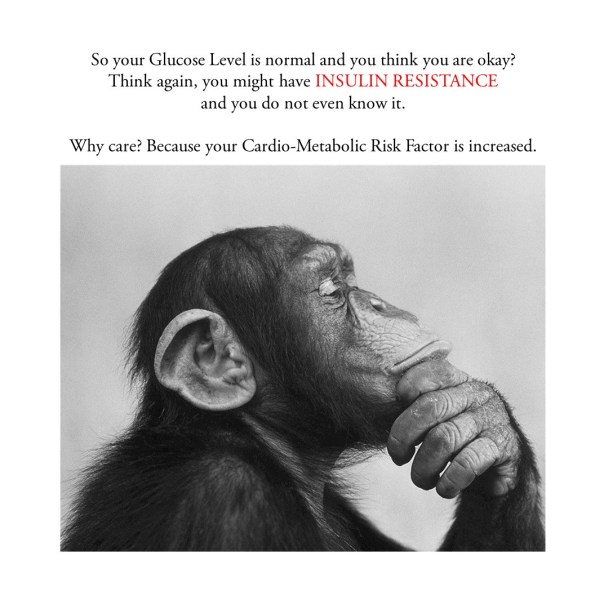

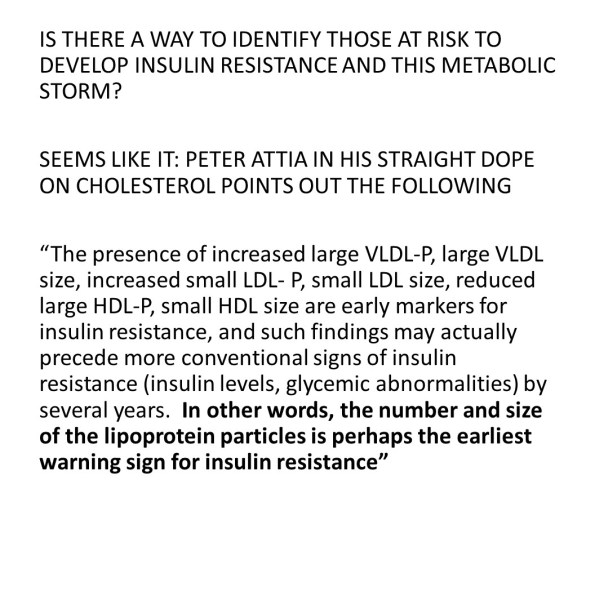
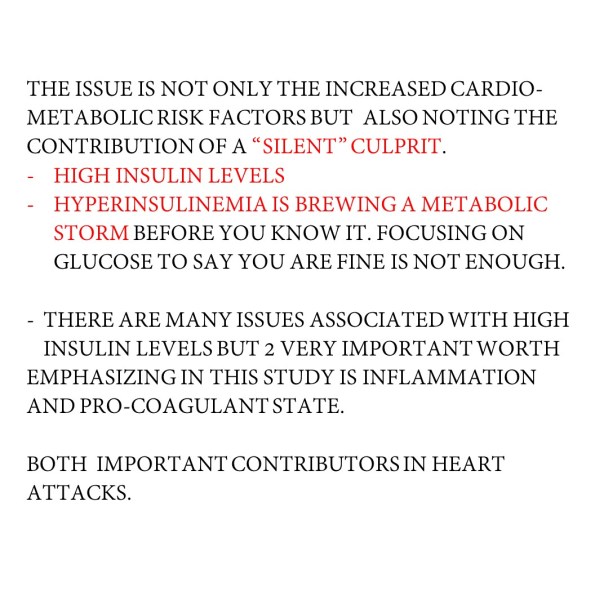

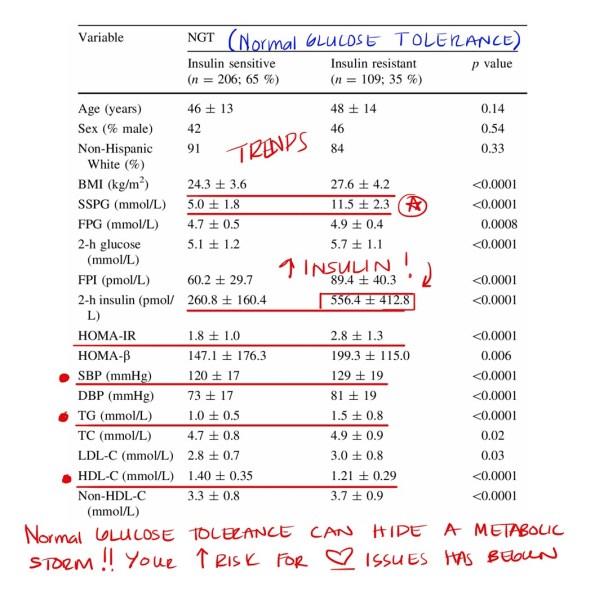

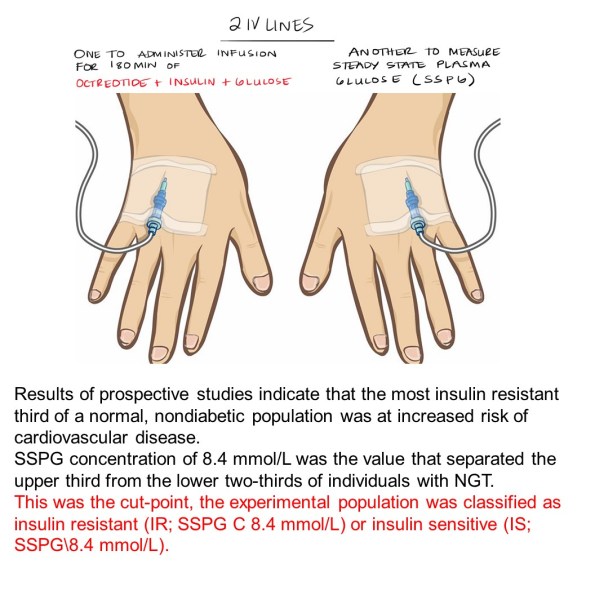


iFastLoca: Combinando un estilo de vida bajo en carbohidratos +/- ayuno intermitente para lograr episodios de cetosis
IMPORTANTE: Este blog-post NO DEBE, bajo ninguna circunstancia, considerarse como una recomendacion medica. En lo general es un estilo de vida saludable pero existen ciertos individuos como diabeticos, hipertensos, (entre otros) que estan tomando varios medicamentos y RECOMIENDO que esten supervisados por alguien con conicimiento sobre dietas cetogenicas o bajas en carbohidratos.
Existiran cambios en su presion, glucosa, electrolitos que si no son manejados adecuadamente pueden llevar a problemas.
Con mis pacientes, cuando hablo acerca de iFastLoca, me tomo aproximadamente 1 hora en explicar el concepto, pasos, y “troubleshooting” y los monitoreo cercanamente.
Http://Facebook.com/christianassadMD
Instagram: @MedHacker
Twitter: @ChristianAssad
Hemos tenido algunos amigos que nos preguntan con más detalle sobre la dieta / estilo de vida de iFast-LoCa (Ayuno intermitente –bajo en carbohidratos). Por lo tanto, trataremos de resumirlo y simplificarlo lo mejor que podamos en esta publicación, y esperamos que te interese lo suficiente como para hacer malabarismos con la idea de probarlo:
Imagina tu vida en los años 1900 y que no tiene acceso a ninguna tienda de conveniencia o que está abandonado en una isla y tiene acceso limitado a los recursos. ¿Cómo serían tus hábitos alimenticios? Pensemos en Chuck Noland (Tom Hanks) en la película Cast Away; su “imagen-antes” muestra el promedio de un cuerpo masculino desatendido… hasta que sus hábitos alimenticios se rompen literalmente y él tiene: NINGÚN acceso a esos venenos de fácil acceso y consumo impulsivo llamados Azúcares Refinados, NINGUNA reserva de Granos Refinados cuidadosamente envasadas y embolsados, NINGUNA fuente de Carbohidratos Refinados. Por lo tanto, él forzosamente toma la ruta-baja en carbohidratos, probablemente con períodos de ayuno intermitente e incluso prolongado, y sin duda logrando un estado de cetosis.
Podrías pensar: “Bueno… eso no suena muy atractivo”. Y en la situación de Noland, estarías en lo cierto. Sin embargo, la idea detrás del artículo es alcanzar la cetosis sin tener que ponerse en estas situaciones extremas, sino llegar a ésta por pura elección personal.


EL PRIMER PASO PARA UN “ADICTO” ES…
Antes de entrar en lo tan fácil como 1, 2, 3 que es iFast-LoCa, sólo queremos que se tomen un momento y verdaderamente comprendan por qué vemos los Carbohidratos Refinados como DROGAS y por qué el mundo está lleno de “adictos”.
Esto se debe al hecho de que, si se permite, estos Carbohidratos Refinados pueden tener el poder de desempeñar una función fundamental en la parte de tu cerebro que controla las recompensas y los antojos (actividad dentro del sistema dopaminérgico meso límbico y el núcleo accumbens que se puede visualizar a continuación); hasta cierto punto, estimulando exactamente la misma área del cerebro de modo similar a como lo hacen la cocaína u otras drogas altamente adictivas. Por lo tanto, si constantemente estás recibiendo este nivel elevado de azúcar, esta sensación falsa de bienestar, comienzas a anhelarlo y recompensándote con él… por lo tanto, das paso a un círculo vicioso que de manera lenta pero segura, ha afectado a millones y se ha convertido (en parte) en la causa de la epidemia de obesidad que estamos viviendo actualmente.
Si piensas que estamos exagerando al comparar los Carbohidratos Refinados con las drogas, echemos un vistazo al escaneo cerebral que se muestra abajo. Lo que estás viendo son las áreas del cerebro que se iluminan después de un alto consumo de Carbohidratos Refinados. ¿Alguna suposición alocada? Estamos casi seguros de que has adivinado correctamente; éstas son las mismas áreas que se iluminan cuando se consumen drogas ilícitas.
Además, no es de extrañarse que los individuos digan que les dan “temblores” y empiezan a sudar si no obtienen su dosis de Carbohidratos preferidas, esto se debe al hecho de que básicamente les da síndrome de abstinencia.

Ahora bien, si los Carbohidratos Refinados son como las drogas, y los productos que los contienen han causado una epidemia de obesidad … entonces, “¿Quién es el distribuidor?”
En 1980 se publicó un informe llamado Lineamientos de Dieta para Americanos -“Dietary Guidelines for Americans” (en cierta medida, va en contra de nuestra bioquímica) y dio las siguientes recomendaciones:
– Aumentar el consumo de carbohidratos hasta que constituyan el 60% de las calorías
-Disminuir el consumo de grasas a un 30%, de las cuales no más de un tercio debe provenir de grasa saturada.
Por otra parte, los Principios de Bioquímica de Lehninger dicen: “En promedio, 40% o MÁS del requerimiento energético diario de los humanos en países altamente industrializados SE SUMINISTRA con triglicéridos dietéticos / ácidos grasos también conocidos como grasas (aunque la mayoría de las pautas nutricionales recomiendan no más del 30% del consumo de calorías diarias proveniente de grasas).
En otras palabras, las Pautas Dietéticas para los estadounidenses parecen ir en contra de la fisiología humana … Ahora, ¿cómo encaja esto en el panorama de la obesidad?
Tabla: Incremento en adultos obesos y extremadamente obesos de EUA entre 20-74 años.

Sí, lo sabemos, esto es alucinante, aún más cuando te das cuenta de que crecimos en una época de consumo “SIN GRASAS”, que metódicamente nos enganchó con el tipo equivocado de “combustible”, y nos convirtió en adictos al azúcar con una mente entumecida que están en constante necesidad de las empresas farmacéuticas para tratar los venenos adictivos que sus socios comerciales nos “alimentaron” durante décadas.
¿Quieres un buen ejemplo? Revisa en YouTube el Reto (Challenge) de Jimmy Kimmel – “Les dije a mis hijos que me comí todos sus dulces de Halloween”. Observa su reacción. Parecería incluso que tienen una adicción. ¿Cuántos niños tienen esa reacción cuando les quitas su brócoli?
VAMOS A ROMPER ESTE CICLO VICIOSO
Así que volviendo a la idea de ayudarte a encontrar la manera de alcanzar ese estado combinado de salud y éxtasis, el estilo de vida iFast-LoCa simplemente procedió a aplicar la metodología de KISS (“Keep it simple, stupid”; “Manténlo simple, estúpido”, el principio señalado por la Marina de EUA en 1960).
A través de él elegimos 2 conceptos fáciles de entender:
- Cancelar/Eliminar los Azúcares Refinados
- Reducir los Carbohidratos NO Refinados (Varia dependiendo del Individuo)
- CANCELAR los Azúcares Refinados
Los azúcares refinados y los granos refinados SE CONSIDERAN carbohidratos refinados, y su común denominador es que no se producen de forma natural. Esto no significa que no existan, simplemente significa que la naturaleza no los produce ni los procesa como tales.
Esto nos lleva al término “refinado” que significa procesado o desarrollado. Y una vez más preguntamos: “¿Qué significa eso exactamente?” Bueno, significa que los azúcares/ almidones y granos que se encuentran en la naturaleza se transforman, esencialmente se pulverizan en partículas más pequeñas, sus componentes se separan e incluso se convierten en sus propios subproductos. La relevancia de esto es que, el tamaño de la partícula sí es importante. Cuanto más pequeñas sean las partículas, más fáciles serán de digerir. Cuanto más fácil sea digerirlas, más rápido subirá el nivel de azúcar en la sangre después de comerlas, utilizando la Glucosa procesada que contienen como “combustible”.
En el caso de los Azúcares/ Almidones, se pueden convertir en cristales, jarabes o polvos y se pueden identificar debido a su sabor dulce.
Estos azúcares/ almidones NO contienen propiedades beneficiosas en lo absoluto. No los necesitas en ningún modo ni forma, pero de alguna manera el típico estadounidense consume entre 120 y 150 libras de éstos cada año. ¿Cómo es posible que alguien concienzudamente haga eso a sí mismo? Bueno, dentro de la pregunta se encuentra la respuesta. Ellos no. Quiero decir, al menos NO a conciencia. El azúcar es un canalla sigiloso, se trepa de repente sobre ti como un ninja por medio de: la sacarosa, glucosa, fructosa, maltosa, dextrosa, lactosa, jarabe de maíz, melaza, miel, jugo evaporado de caña, concentrados de jugo de fruta, cristales de caña, edulcorante de maíz, etc. .
En el caso de los granos, se encuentran con un recubrimiento de salvado exterior; esta capa se rompe y luego los granos son separados, granulados, e incluso pulverizados.
Como ejemplo, la harina está hecha de granos de cereales, trigo, maíz, centeno, cebada, arroz, etc. No se encuentra naturalmente en la naturaleza. Se pulveriza o se refina en un polvo tan fino que el sistema digestivo y el metabolismo de tu cuerpo no se esfuerzan en absoluto por procesarlo, y por lo tanto, los picos del “combustible” de Glucosa se liberan instantáneamente en tu organismo. Sí, algunos dicen que se sienten llenos de energía consumiendo pasteles o pastas, lo que realmente están experimentando es una sigilosa “euforia” (High) ocasionado por el azúcar; la diferencia con la cetosis es que eventualmente tendrás una “recaída“ de este nivel de euforia (“sugar-high”)… y el impulso por “despegar” nuevamente te llevará a aventurarte para tu próxima dosis.
Esa dosis puede dar lugar a que se combinen azúcares refinados/ almidones y granos, convirtiéndolos en combos de Carbohidratos Refinados como: refrescos, dulces, donas, galletas, papas fritas, barras de granola, cereales, pan, tortillas, salsa de tomate, etc. Todos estos son caballos de Troya, pisoteando como vehículos para los ejércitos Refinados, que se liberan lentamente en las paredes desprotegidas de su cuerpo.



Una vez, un buen amigo nuestro resumió las dietas en una sola frase: “¡Si sabe bien escúpalo!” No llegaremos a decir eso, pero lo que sí afirmamos es que si el hombre lo hizo, piensa dos veces antes de ponerlo tu boca. En términos científicos: si en 3.5 mil millones de años la Madre Naturaleza no lo generó, entonces puedes estar seguro de que no lo necesitas … ¿Entiendes el significado?
- Reduzca los carbohidratos NO Refinados
Los carbohidratos que se encuentran en la naturaleza se denominan carbohidratos NO refinados. Estos carbohidratos se encuentran en frutas, verduras, nueces, legumbres, lácteos, etc. El aspecto importante de entender los Carbohidratos No Refinados es poder visualizar cuántos gramos de carbohidratos tiene cada alimento y monitorear nuestra ingesta.
En nuestro caso, antes de investigar esto, comíamos uvas como palomitas de maíz, puñados de nueces, ¡y tal vez comenzamos nuestro día con un batido doble de dos plátanos! No hay nada malo con estos alimentos, lo que estaba mal era nuestra ingenua indulgencia, nuestra sobrecarga de Carbohidratos NO Refinados. (UNA VEZ MAS ESTO VARIA DEPENDIENDO DE METAS E INDIVIDUO)
La idea no es evitar o reducir estos alimentos por completo, simplemente es adquirir los conocimientos y la capacidad para cuantificarlos y consumirlos de forma estratégica con moderación. A esto le llamamos Concientización de Carbohidratos (Carb-Awareness).
Los enlaces / tablas siguientes muestran las cantidades de carbohidratos por porción.
https://www.dietdoctor.com/low-carb/foods
Puedes preguntarte, “Pero, ¿cuánto es suficiente?”. A continuación dividimos IFast-LoCa en tres fases diferentes, dependiendo de la cantidad de consumo de carbohidratos.
ESTRATEGIA: ¿CUÁNTOS CARBOHIDRATOS DEBEN SER CONSUMIDOS DIARIAMENTE?
En esta sección detallamos las fases o niveles de consumo de carbohidratos para que puedas ver qué esperar también. El primer punto positivo es que NO debes preocuparte por contar calorías, solo practica la Concientización de Carbohidratos (Carb-Awareness). Escucha a tu cuerpo!
============================================================================
Fase de inducción (Prepárate para el éxito)

La inducción es decir adiós a los Carbohidratos Refinados. Sabemos que puede ser un difícil adiós, después de todo han pasado juntos tanto tiempo que parece casi imposible dejarlos ir.
Algunos incluso pueden decir: “La vida no vale la pena vivirla si voy a limitar cada bocado que como, prefiero disfrutar la vida”. Sí, el miedo al cambio y dejarlo ir siempre trae consigo ansiedad y, a su vez, las excusas se derraman. Solo sé hombre o mujer valiente y date la oportunidad de hacer un valioso CAMBIO DE VIDA. ¿Qué es lo peor que puede pasar?
Por lo tanto, aprovecha esta semana para limpiar tu despensa y para educarte acerca de los alimentos que comerás. Hay muchas comidas geniales y posibles recetas, de ninguna manera debes pasar hambre o mantener tus papilas gustativas prisioneras.
Ahora bien, la gente nos pide alguna dieta, no hay niguna: si tienes hambre come, si quieres un bocadillo, hay muchos, solo recuerda preguntarte si la naturaleza lo hizo naturalmente y estar consciente de lo que comes.
Un aspecto importante para tener éxito es familiarizarse finalmente con las etiquetas de nutrición. Se han aprobado grandes regulaciones en lo que respecta a la transparencia de los ingredientes: ¡háganos de ellos!
Por ejemplo, hace unos meses estábamos comiendo salmón ahumado bajo la suposición de que era proteína pura y grasa saludable, ¿cierto? Bueno, para nuestra sorpresa, de alguna manera “los distribuidores” de los que hablamos antes lograron agregar 5 gramos de azúcares por porción; ¡un total de 4 porciones añadidas a 20 gramos de veneno sigiloso!
Moraleja, lee las etiquetas de nutrición, entiéndelas y visualiza cómo estás llenando el “tanque de combustible’ de tu organismo.
============================================================================
Fase I > Carbonhidratos 60-120gr/dia

Sí, somos adictos a los carbohidratos. Esa es una de las principales razones por las que muchos de nosotros nos sentimos mal cuando eliminamos/reducimos los Carbohidratos Refinados de nuestra vida. Y sí, al igual que un medicamento, esto seguramente se sentirá como un tipo de abstinencia. Los resultados pueden variar dependiendo de tu consumo actual, pero hemos tenido pacientes que nos dicen que se sentían nerviosos, sudaron fríos, se sintieron ansiosos o los tres cuando evitaron su dosis de CarbohiDrogas preferida.
Como mencionamos en la publicación (post), la manera más eficiente de disminuir la ingesta de carbohidratos es simplificando de dónde los vas a obtener.
En esta fase, debes comenzar a educarte y familiarizarte con lo que puedes y no puedes comer. Lentamente lo dominarás, comenzarás a visualizar nuevas combinaciones de perfiles de sabores, y comprenderás que la comida y el gusto, ¡no están limitados en absoluto!
> Para aquellos que les gusta beber o simplemente tomar un poco de alcohol de vez en cuando: tequila, whisky, escocés, vodka, ron, brandy, ginebra. Si es posible, aprende a combinarlos con agua mineral o gasificada, y obviamente reduce los mezcladores azucarados, y si tiene un “paraguas” en el vaso, NO TE ACERQUES.
============================================================================
Fase II > 40-60gr de Carbohidratos/dia

Esta fase es muy similar a la de la Fase I, pero el objetivo es disminuir tu consumo de Carbohidratos NO Refinados a 40-60 gr.
Pon tu propio ritmo. Ya sea para que puedas permanecer poco más tiempo en la Fase I con 60-80 gramos o puedas optar por seguir adelante. Sea lo que sea, solo sé fiel a cómo te sientes, y cuando estés listo pon el acelerador y hazlo, visualizando tu cuerpo utilizando las grasas como su principal fuente de energía y luego…
===========================================================================
Fase III 20-50gr de carbohidratos/dia

Aviso: cuando las personas ingresan en la etapa de cetosis, muchas describen una sensación similar a la de una resaca (cruda), o también conocida como síndrome de abstinencia de carbohidratos. A medida que agotamos nuestro glucógeno y comenzamos a utilizar la grasa como energía, nuestro cuerpo comenzará a eliminar más líquido y sodio y comenzará a ir al baño. Esto se debe al hecho de que el glucógeno requiere alrededor de 3 a 4 gramos de reserva de agua. Estos desequilibrios de electrolitos pueden causar dolores de cabeza, náuseas, sentirse fatigado o deshidratado. Muchos abordan esto tomando jugo de pepinillos, Pedialyte, o agua mineral con limón y sal. Dura aproximadamente de 2 a 3 días, así que esfuérzate y sigue adelante.
En una dieta baja en carbohidratos es IMPERATIVO el ingerir por lo menos 3 gramos de sodio por dia. (Si ya se, les han comentado en el pasado que esto les va elevar la presion… En una dieta baja en carbohidratos se aumenta la excrecion de sodio y por lo tanto no aplica el mismo concepto). Magnesio 450mg al dia tambien ayuda. Y el caldo de hueso todos los dias puede convertirse en tu mejor amigo.
============================================================================
TIP para Aceleración
Ayuno Intermitente como Catalizador
El ayuno intermitente se puede usar de diferentes maneras. Hay personas que pueden ayunar sin problemas desde el comienzo, otras no. Tenemos diferentes resultados. Uno de nosotros podría tener dolores de cabeza y se sentiría mal y solo después de lograr la cetosis es cuando el ayuno podría incorporarse. ¿La razón? Una vez que las reservas de grasa se utilizan como energía, el ayuno durante 18-24 horas prolongadas se convirtió en un pedazo de pastel. Por otro lado, uno de nosotros ayunó en las fases iniciales y aceleró el agotamiento de las reservas de glucogeno sin ningún síntoma. Lo que estamos tratando de decir es que no hay una dieta o un programa específico para todos los gustos, cada individuo tiene que adaptarlo a su propio cuerpo.
Otras formas de utilizar el ayuno intermitente en nuestro beneficio es después de haber pasado un día de trampa (cheat day). Así que digamos que un domingo te “atiborras” bien, luego el lunes haces un ayuno de 24 horas que probablemente reducirá las reservas de glucógeno que creaste y te devolverá a la cetosis.

============================================================================
Con diferentes combinaciones, permutaciones e incorporaciones de estos conceptos, casi todos los que conocemos han perdido peso; incluso justo en la fase de iniciación de una dieta baja en carbohidratos. Aquellos que incorporan el concepto de ayuno intermitente +/- logrando que la cetosis incremente drásticamente su pérdida de grasa.
Por último, pero no menos importante. Una de las principales ideas erróneas más que escuchas de las personas con respecto a una dieta baja en carbohidratos es cuando se refieren a esta como una dieta “extrema” de Atkins; comer demasiado tocino o hamburguesas grasientas procesadas en un negocio de hamburguesas de su localidad.
Esto no es lo que deberías tratar de lograr. Ni mucho menos. ¡No porque tengas que reducir los carbohidratos y comer más grasa significa que vas a rellenarte la cara con dos barras de mantequilla! Queremos que comas sano y uses tu sentido común.
Come proteínas tales como atún, salmón, pescado, pollo, sardinas, carne de res.
Continúa comiendo (no bebiendo) tus vegetales verdes, verduras de hoja, vegetales con fibra.
Mantente alejado del veneno líquido; no más Coca-Cola, Pepsi, etc. No más jugo de fruta, ya sea concentrado o incluso natural.
Cheers
Christian Assad, MD Interventional Endovascular Cardiology + MedHacker
Alexander Assad, MBA
Get your invite to the iFastLoca Group here!
The new and improved iFastLoca group is now open to public. Just click on the image or link below to get your invite.
https://publicslack.com/slacks/https-ifastloca-slack-com/invites/new
Holidays are great but they can also be bad for your HEART!
In 2004, Phillips et al, published an article in Circulation (@circaha) that found an increased mortality around Christmas and New Year. We can even appreciate a a trend upwards since Thanksgiving.
Tokenizing real-time data – Streamr explained in 2 minutes

Streamr CEO Henri Pihkala explains Streamr in 2 minutes.Streamr tokenises real-time data and delivers unstoppable data to unstoppable apps. For more information, visit the following links:Website: http://ift.tt/2zg6oMq: http://ift.tt/2j3XQiW: http://ift.tt/2zfYtin: https://t
Medical VR Start-Up Gets $8.5m Funding
EchoPixel, the pioneer of True 3D, an interactive Virtual Reality software solution that assists healthcare professionals in detailed interpretation of medical images, both for diagnosis and surgical planning, has closed an $8.5 million Series A financing.
3 Ways Virtual Reality Is Transforming Medical Care
Think virtual reality is just about gaming and the world of make-believe? Get real. From product design to real estate, many industries have adopted VR and related technologies— and nowhere are the benefits of VR greater than in healthcare.











